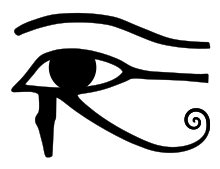Werethekau
Werethekau (Egyptian: wrt-hk3w "great one of magic, great enchantress"; alternately Urthekau, Weret Hekau) was an Ancient Egyptian deity. She served as the personification of supernatural powers.[1]
| wrt-hk3w in hieroglyphs |
|---|

In myth
| Part of a series on |
| Ancient Egyptian religion |
|---|
 |
|
Beliefs |
|
Practices
|
|
Deities (list) |
|
Locations |
|
Symbols and objects
|
|
Related religions
|
|
|
As a deity dedicated to protection, she often appeared on funerary objects, particularly weapons, to allow the deceased to protect him or herself against the dangers of the underworld. She also was placed on ivory knives as a charm to protect pregnant and nursing mothers.
Her power was one of the inherent qualities of the Crowns of Egypt. As goddess of the crowns she was a snake or a lion-headed woman and dwelt in the state sanctuary.[2] As the wife of Ra-Horakhty she is depicted with his solar disk on her head. Werethekau was an epithet frequently conferred on Isis,[3] Sekhmet,[4] Mut,[5] and others.
See also
References
| Wikimedia Commons has media related to Werethekau. |
- Barbara S. Lesko, The great goddesses of Egypt, University of Oklahoma Press, 1999, p 74
- Manfred Lurker, The Routledge Dictionary of Gods and Goddesses, Devils and Demons, Routledge 2004, ISBN 0-415-34018-7, p.192
- Lurker, op.cit., p.192
- Erik Hornung, Conceptions of God in Ancient Egypt: The One and the Many, Cornell University Press 1996, ISBN 0-8014-8384-0, p.284
- Carol A. R. Andrews, Amulets of Ancient Egypt, University of Texas Press 1994, ISBN 0-292-70464-X, p.37